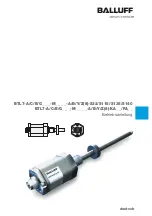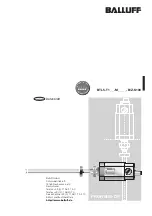
4
High Voltage Instrument Transformers | DDB/DFK/DDN/DFN
User manual
INSTALLATION
MOUNTING ON THE STRUCTURE OR PLATFORM/
Check the information on the nameplate to verify that the
electrical characteristics match those of the system.
Carefully check that all four legs of the transformer are perfectly
placed on the platform before tightening the anchor bolts.
If this is not the case, correct the defect, by wedging metal
plates or similar. Failure to do so may result in insulator breakage
or oil leakage.
The slings must be attached to the upper fl ange area of the
insulator to prevent it from tipping over during the operation
(see fi g. 1b).
DANGER
INJURY AND/OR FIRE
› Do not install the equipment without following our specifi cations
› Use the transformers under proper service conditions and according to specifi cations
› Do not loosen any screws or fastening nuts, it can cause oil leaks
ELECTRICAL DISCHARGE
› Do not wire or connect when the equipment is in operation
› The ground terminal of the apparatus must be solidly earthed by means of a connection capable
of withstanding and conducting the line’s fault current to earth.
› Do not short-circuit the secondary circuit of the transformer
Indications for units consisting of several capacitor units:
› For the lower unit, proceed as described above.
› For all other capacitor units, the slings are to be tied to the
upper fl ange of the isolator (see fi g. 1c) or to the eyebolts of
the cover (see fi g. 1d).
Only the fastening screws in the packaging must be loosened as shown in fi g. 2, otherwise the tightness will be
broken and oil will leak out
Once the equipment has been unpacked, a visual inspection is
suggested so as to detect possible oil leaks or stains.
Oil stains are not necessarily the result of a leak. In most
cases, the stains are nothing more than oil residues from the
manufacturing process.
The stain should be cleaned with a degreaser and the equipment
should be kept under observation. If the stain reappears or
spreads, contact the manufacturer.
TRANSFORMER MOUNTING
(when the unit consists of several capacitor units)
/
The assembly of the transformer made up of several capacitor
units must be carried out on the structure in the following
sequence:
1. Lower capacitor unit
:
› Remove the protective cover of the compensators from
the upper part (fi g. 3), keeping the nuts for subsequent
attachment of the upper unit.
› Lift it onto the structure as described in the handling section
and fi g. 1b.
2. Intermediate capacitor unit
(if any):
› Remove the protective cover of the compensators from
the upper part (fi g. 3), keeping the nuts for subsequent
attachment of the upper unit.
› Only the screws that connect the unit to the base of the
packaging should be loosened. The unit is now ready to be
lifted (fi g. 2).
› To lift it as described in the chapter on handling and fi g. 1c
and fi g. 1d.
› This unit is placed on top of the lower unit by connecting the
cable between the two to the threaded hole at the bottom
of the upper unit by means of the screw provided (fi g. 4.)
Both units are to be coupled with the stud bolts that have
become free after removing the protection disc (fi g. 5.) The
tightening torques are given in
Annex II
.
3. Upper
capacitor
unit
: Proceed as in point 2 (Not applicable
the point regarding the protective cover).
Do not forget to make the electrical connections between the capacitor units
Check that the serial numbers on the same transformer match
If an already installed unit is disassembled, proceed in the
opposite way to that indicated, not forgetting to fi t the short-
circuit cable to all the capacitor units.
Keep the grounding switch of the carrier accessories (if
applicable) in the closed position.






































